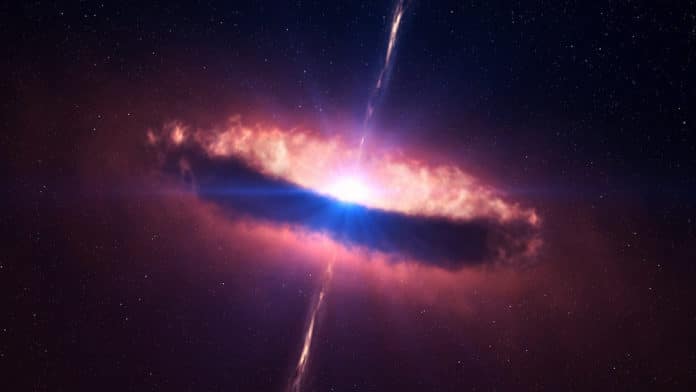Quasars are the most luminous persistent source of light in the universe. Almost all galaxies have one quasar. Until now, astrophysicists have identified more than a million in total.
A quasar is formed when a supermassive black hole at the center of a galaxy has enough material around it to fall into the accretion disc to generate the energy to power it.
Changing-look quasars switch quickly between a state of high radiance and low luminosity, and scientists are yet to work out why. When the brightness is dialed down, a quasar is too faint even to consider being seen against the backdrop of the host galaxy, making it hard for space scientists to discover it is possible that it or the supermassive black hole it is associated with.
Astrophysicists from the University of Bath have developed a new method to pinpoint rare extragalactic objects such as ‘changing-look quasars.’ It will allow scientists to discover quasars undergoing extreme changes in luminosity. Hence, scientists could create a more comprehensive census of supermassive black holes.
In the future, scientists will determine the causes of the luminosity switches to gain a better understanding of how supermassive black holes grow.
Astrophysicist Dr. Carolin Villforth, who was involved in the research, said: “These quasars and supermassive black holes are extremely important for galaxy evolution—the more we learn about them, the more we understand how they influence the growth of galaxies.”
In this study, scientists used spectroscopic data to assess the changes in minimal wavelength ranges. Doing so, scientists were able to detect changing-look quasars that photometric searches had missed.
The technique also helps them spotting four changing-look quasars millions of light years from earth. All four of them were too dim to be picked up by photometric searches.
Former MPhys student at Bath, Bart Potts, who led the research, explained: “We took a previous dataset and applied our new method to see if we could identify any new changing quasars that others had missed. This gave us a bigger set of changing-look quasars for further study and validated that our methodology was more sensitive than others, which was great. It shows that our methodology is more sensitive to weaker luminosity.”
“Ultimately, this finding will give something to the academic community that studies quasars. It will help others further their research into why this specific type of quasar goes through luminosity switches. We are helping our community find important answers to big questions.”
Journal Reference:
- A systematic search for changing-look quasars in SDSS-II using difference spectra. arXiv:2104.14225v1 [astro-ph.GA] arxiv.org/abs/2104.14225
